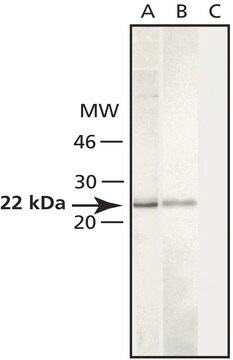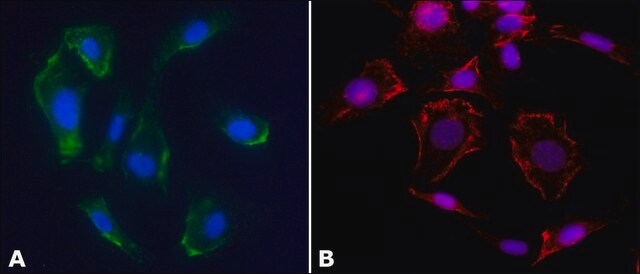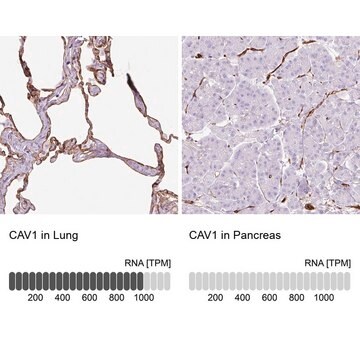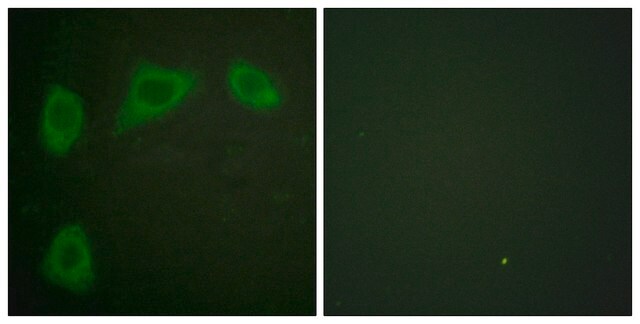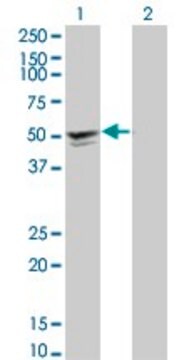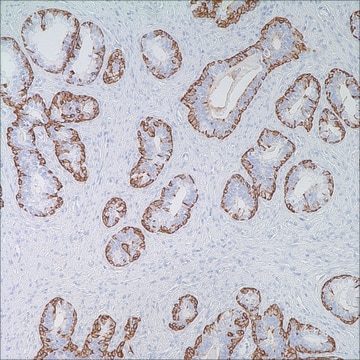SAB4200216
Monoclonal Anti-Caveolin-1 antibody produced in mouse

clone CAV1, tissue culture supernatant
Sinónimos:
Anti-BSCL3, Anti-CAV1, Anti-CGL3, Anti-MSTP085, Anti-VIP21, Anti-caveolae protein, 22kDa
About This Item
Productos recomendados
origen biológico
mouse
conjugado
unconjugated
forma del anticuerpo
tissue culture supernatant
tipo de anticuerpo
primary antibodies
clon
CAV1, monoclonal
formulario
buffered aqueous solution
mol peso
antigen 22 kDa
reactividad de especies
rat, human, mouse
validación mejorada
independent
Learn more about Antibody Enhanced Validation
técnicas
immunohistochemistry: suitable
indirect immunofluorescence: 1:1000-1:2000 using human HUVEC or mouse 3T3 cells.
western blot: suitable
isotipo
IgM
Nº de acceso UniProt
Condiciones de envío
dry ice
temp. de almacenamiento
−20°C
modificación del objetivo postraduccional
unmodified
Información sobre el gen
human ... CAV1(857)
mouse ... Cav1(12389)
rat ... Cav1(25404)
Categorías relacionadas
Descripción general
Inmunógeno
Aplicación
Western Blotting (1 paper)
Acciones bioquímicas o fisiológicas
Forma física
Cláusula de descargo de responsabilidad
Not finding the right product?
Try our Herramienta de selección de productos.
Opcional
Código de clase de almacenamiento
10 - Combustible liquids
Punto de inflamabilidad (°F)
Not applicable
Punto de inflamabilidad (°C)
Not applicable
Certificados de análisis (COA)
Busque Certificados de análisis (COA) introduciendo el número de lote del producto. Los números de lote se encuentran en la etiqueta del producto después de las palabras «Lot» o «Batch»
¿Ya tiene este producto?
Encuentre la documentación para los productos que ha comprado recientemente en la Biblioteca de documentos.
Artículos
Quantitative and qualitative western blotting to validate knockdown by esiRNA.
Nuestro equipo de científicos tiene experiencia en todas las áreas de investigación: Ciencias de la vida, Ciencia de los materiales, Síntesis química, Cromatografía, Analítica y muchas otras.
Póngase en contacto con el Servicio técnico